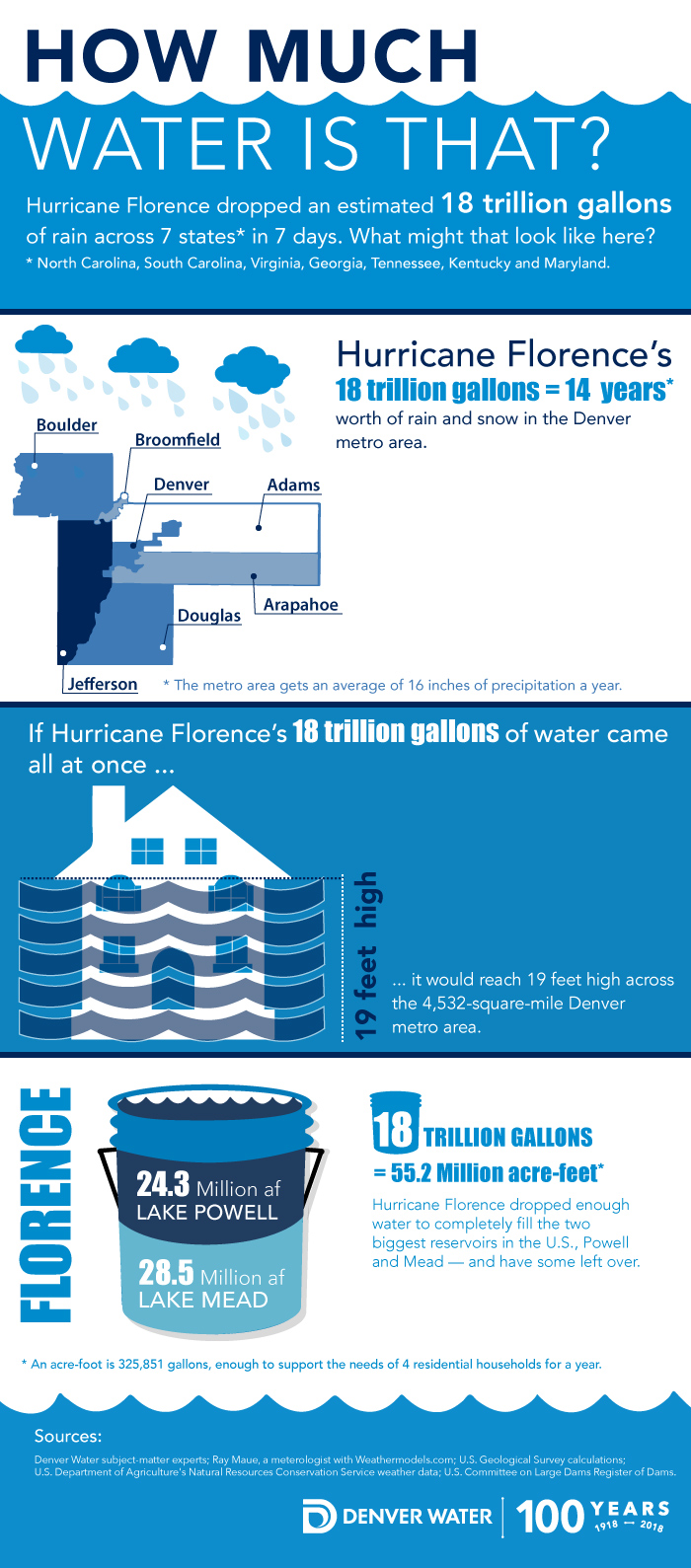
Hurricane Florence dumped an estimated 18 trillion gallons of water
The devastation left in the wake of Hurricane Florence’s pass over the southeastern United States will mark the lives of millions of people for years to come.
The storm’s winds have faded. But more than two weeks after Florence made landfall in North Carolina on Sept. 14, the stunning amount of rain dumped by the hurricane across the region is still causing damage as swollen rivers swamp towns.
At least 48 people have been killed by the storm and the aftermath. Thousands have fled their homes for shelters. Analysts believe the property damage will top $17 billion.
During its slow churn across the southeast, Florence dumped an estimated 18 trillion gallons of water across seven states in seven days, according to Weathermodels.com.
That’s a huge amount of water.
By contrast, the September 2013 floods that swept across Colorado’s northeastern plains sent an estimated 60 billion gallons of water surging past the South Platte River gauges near Nebraska between Sept. 17-23 of that year, according to water engineers with the Colorado Department of Natural Resources.
Statewide in 2013, more than 18,000 Coloradans were evacuated and 10 people died in the flooding, which destroyed 1,882 structures and damaged another 16,000 buildings.
Yet Colorado’s 2013 floods, the estimated 60 billion gallons, barely register against the 18 trillion gallons produced by Florence on a chart comparing the water produced by the two incidents.
So, we wondered, what might 18 trillion gallons of water look like here?
With the help of statisticians at Denver Water, here’s what we learned.
Hurricane Florence’s estimated 18 trillion gallons of water would:
- Be equivalent to 14 years’ worth of average rain and snowfall in the Denver metro area, which gets an average of 16 inches of precipitation a year.
- Bury the seven-county metro area, an area that covers 4,532 square miles, in 19 feet of water, nearly touching the second-floor gutters on a two-story house if all that water came at once.
- Completely fill (from empty to full) the two biggest reservoirs in the U.S., lakes Mead and Powell, which are critical to the Colorado River and water supplies across the Southwest, and still have water left over.
- Completely fill every one of Colorado’s 1,953 water storage reservoirs seven times over, with water left over.
- Supply all the water needs of all of Colorado’s cities and towns, everyone connected to a municipal water supply, for 58 years at the current rate of use.
- Supply every water user in the state of Colorado — the cities, towns, farms, ranches, businesses and those who use wells — for 4.5 years at the state’s current rate of use.
- Cover the entire state of Colorado, 104,185 square miles, with 10 inches of water.

